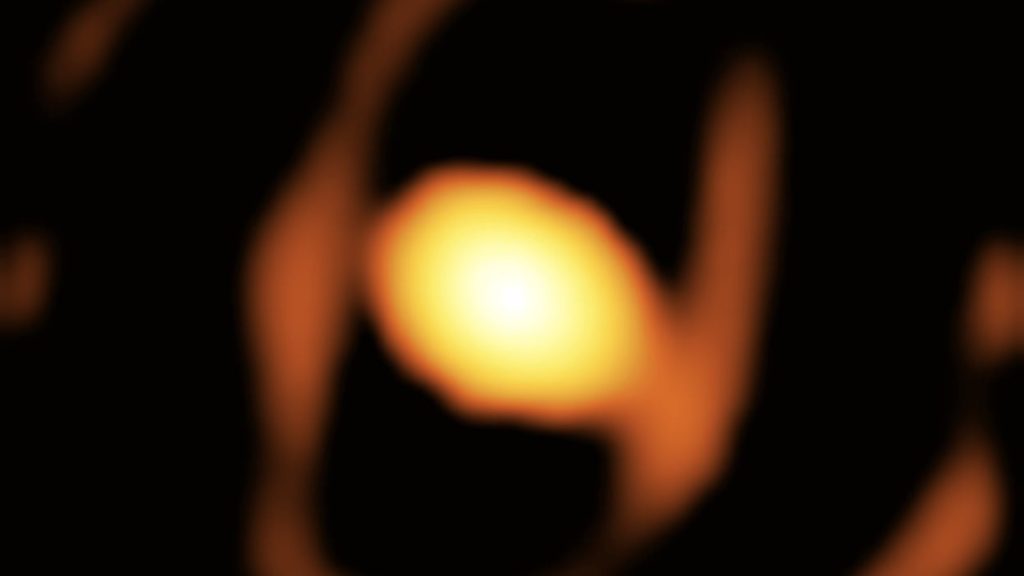Astronomers have been able to look at the sun and a handful of other stars in the Milky Way up close, thanks to modern advances in telescopes.
But getting a detailed view of a star outside the galaxy has eluded top scientists in the field, until now.
Using the European Southern Observatory’s Very Large Telescope Interferometer, astronomers have captured the first close-up picture of an extragalactic star. The image showcases WOH G64, a star some 160,000 light-years away from Earth in space. It beams in the constellation Dorado from the Large Magellanic Cloud, a small galaxy on the periphery of the Milky Way.
And it seems researchers have caught it just in time. The image documents the star as it was 160,000 years ago, not as it is today. That means the star has likely already died, Jacco van Loon, reader in astrophysics at Keele University in the United Kingdom, told Mashable.
It’s as if the astronomers had a time machine and were able to travel back to the moment just before certain doom.
“The signal of the explosion is on its way,” said van Loon, one of the co-authors of the study. “WOH G64 is losing mass at such a high rate, it wouldn’t last 160,000 years, and the extreme red supergiant phase it is in, for such a massive star, also doesn’t last as long. The changes we are seeing now suggest we may see it explode within the next few thousand years, or even within our lifetime.”

Credit: ESO / K. Ohnaka et al., L. Calçada
WOH G64 is what’s known as a red giant, a star nearing the end of its life, running out of hydrogen fuel. Through this process, aging stars expand about 100 to 1,000 times their original size. But this particular star is what’s sometimes called a red supergiant because it’s so exceptionally huge.
Nicknamed the “behemoth star,” WOH G64 is actually about 2,000 times larger than the sun. Like other red giants, it has shed outer layers of gas and dust. Curiously, the star appears to have grown dimmer over the past decade, encouraging scientists to keep a closer eye on it.
“The signal of the explosion is on its way.”
That relative faintness probably means the end is nigh. More and more heavy material will build up on the core. The pile eventually reaches a tipping point, causing the core to collapse under its own gravity. The outer layers of the star then blast into the cosmos as a supernova. Such a violent explosion can sometimes appear brighter than a whole galaxy.
To the research team’s surprise, the star is wrapped in an egg-like cocoon of dust. The odd stretched shape of the dusty nebula could be due to the shedding process. Another possible explanation is that an unseen companion star is influencing it. The scientists’ findings are described in the journal Astronomy & Astrophysics.
“We are excited because this may be related to the drastic ejection of material from the dying star before a supernova explosion,” said Keiichi Ohnaka, lead author from the Universidad Andrés Bello in Chile, in a statement.
To take the picture, the team used one of the telescope’s sophisticated instruments, dubbed GRAVITY, which can capture the light of four telescopes. But as the starlight grows fainter, getting new images will become even more challenging. A planned upgrade to the instrument should enhance its sensitivity soon, according to ESO, allowing researchers to continue monitoring the behemoth at its bitter end.

